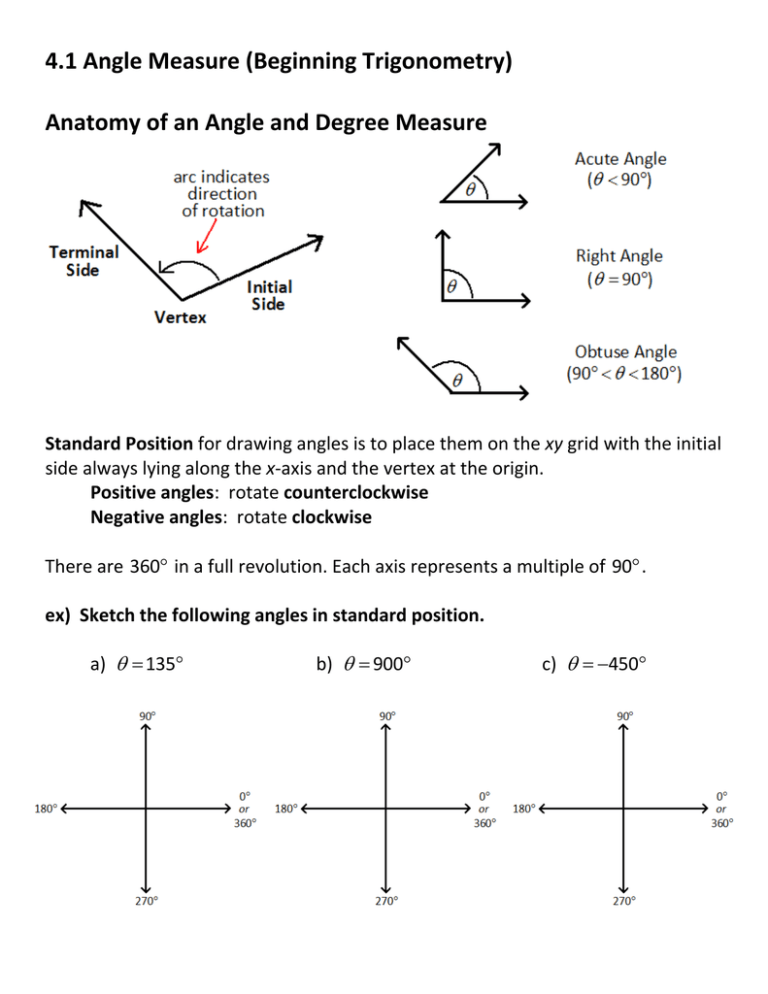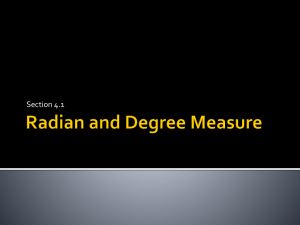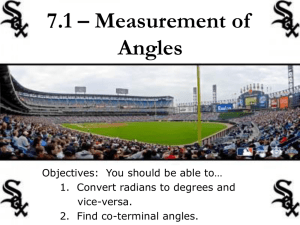Angle Measure & Trigonometry Basics Worksheet
advertisement

4.1 Angle Measure (Beginning Trigonometry) Anatomy of an Angle and Degree Measure Standard Position for drawing angles is to place them on the xy grid with the initial side always lying along the x‐axis and the vertex at the origin. Positive angles: rotate counterclockwise Negative angles: rotate clockwise There are 360° in a full revolution. Each axis represents a multiple of 90° . ex) Sketch the following angles in standard position. a) θ = 135° b) θ = 900° c) θ = −450° Radian Measure Angles can be measured based on what portion of circle of radius 1 they cut out. This is referred to as radian measure. The circumference of a circle = ____________ The circumference of a circle of radius 1 = ____________ One full revolution: Half a revolution: Quarter of a revolution: In degrees = 360° In degrees = 180° In degrees = 90° In radians = ______ In radians = ______ In radians = ______ The main equivalence between degrees and radian measures is ______________. This can be used to convert between the two measures. ex) Sketch these angles in standard position and make the conversions. (The circles given are marked off in 15° increments.) a) Convert θ = −210° into radians. Express in terms of π . b) Convert θ = 156.8° into radians. Round to 2 decimal places. c) Convert θ = 74π into degrees. d) convert θ = 1 into degrees. Round to 2 decimal places. Coterminal Angles Coterminal angles’ measures differ by multiples of 360° (for degrees) or by multiples of 2π (for radians). ex) Determine a positive and negative coterminal angle for θ = 90° ex) Determine a positive and a negative coterminal angle for θ = 5π . Arc Length The length of a circular arc cut out by an angle θ = ___________________ THE ANGLE θ MUST BE IN RADIANS! ex) What is the length of the arc shown here? Give an exact value AND an approximation of the value to 2 decimal places. EXACT VALUE ______________ APPROXIMATION ______________ Degree and Radian measures for special angles There are certain angles which are used frequently in math/science/engineering. These ‘special angles’ are multiples of 30°, 45°, 60° and 90°. It will be WELL WORTH YOUR EFFORT to know their degree/radian equivalences.

